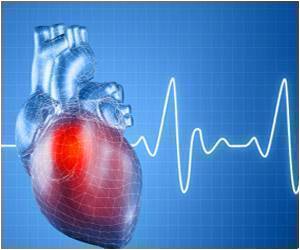Routine Electrocardiograms (ECG) results for patients with atrial fibrillation (AF) can help doctors identify those at higher risk of adverse cardiovascular outcomes, including death.

Through a retrospective analysis of thousands of patient files, researchers at the Montreal Heart Institute and the University of Calgary learned that a routine 12-lead surface ECG — in which 12 different electrical signals are recorded — conducted at the time of AF diagnosis is an accurate predictor of later adverse events.
Research presented today at the Canadian Cardiovascular Congress found that patients with AF do not all face the same risks for disease; determining the extent to which any individual patient is at risk of adverse events has been a challenge for doctors, until now.
"The ECG has recently received resurging attention due to its simplicity, relatively cheap cost and near universal availability," says Dr. Jason Andrade, cardiologist at the Montreal Heart Institute. "This knowledge, combined with the recognition that all patients with AF will receive an ECG as part of their diagnostic work-up, makes it highly useful as a method for assessing risk."
ECG is used to measure the rate and regularity of heartbeats, as well as the size and position of the chambers, the presence of any damage to the heart and the effects of drugs or devices used to regulate the heart, such as a pacemaker
Researchers found that the strongest indicators of risk were prolonged QRS duration and prolonged PR and QT intervals, each of which is a measure of electrical waves that regulate heart rhythm.
Advertisement
An increased PR interval is associated with cardiovascular death and sudden cardiac death. A prolonged corrected QT interval is associated with an increased risk of cardiovascular hospitalization and sudden arrhythmic death in men.
Their data analysis showed that a prolonged QRS duration was associated with a 40 per cent increased risk for all-cause mortality, a 50 to 60 per cent increased risk for cardiovascular mortality and a 90 to 120 per cent increased risk for sudden cardiac death.
It is estimated that 350,000 Canadians live with AF, and that rate is likely climbing as the population ages. Those with AF are three to five times more likely to suffer a stroke, the majority of which are disabling and are more likely to be fatal. However, prevention is effective at reducing the risks associated with AF.
Atrial fibrillation (AF), a type of irregular heart rhythm known as an arrhythmia, can cause the heart to beat very fast, sometimes more than 150 beats per minute. While it is rare in people under 40, its prevalence increases with age.
"Knowing that the risk of developing AF increases with age and with other risk factors such as diabetes, high blood pressure and underlying heart disease, it is important to take action by following a healthy lifestyle to start reducing your risk," says Heart and Stroke Foundation spokesperson Dr. Beth Abramson. "Your risk for developing many diseases can be reduced if your diet is lower in sodium, saturated and trans fats and includes plenty of vegetables, fruit and whole grains."
She says that if you have a tendency to high blood pressure — which is associated with AF — then regular activity, watching salt in your diet and maintaining a healthy body weight are especially important preventive measures.
Dr. Abramson also recommends being tobacco-free, limiting alcohol intake and reducing stress as much as possible. "Any lifestyle changes that lower blood pressure may reduce your chances of developing AF," she adds.
Source-Eurekalert















